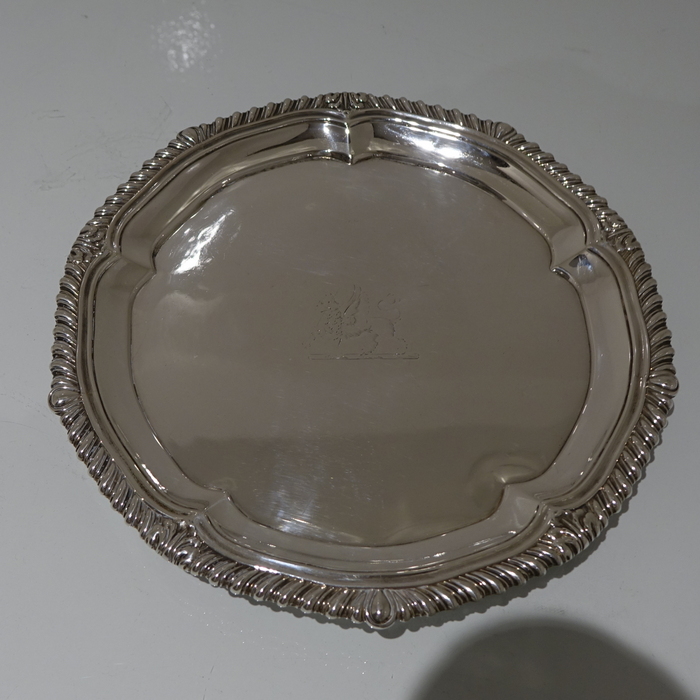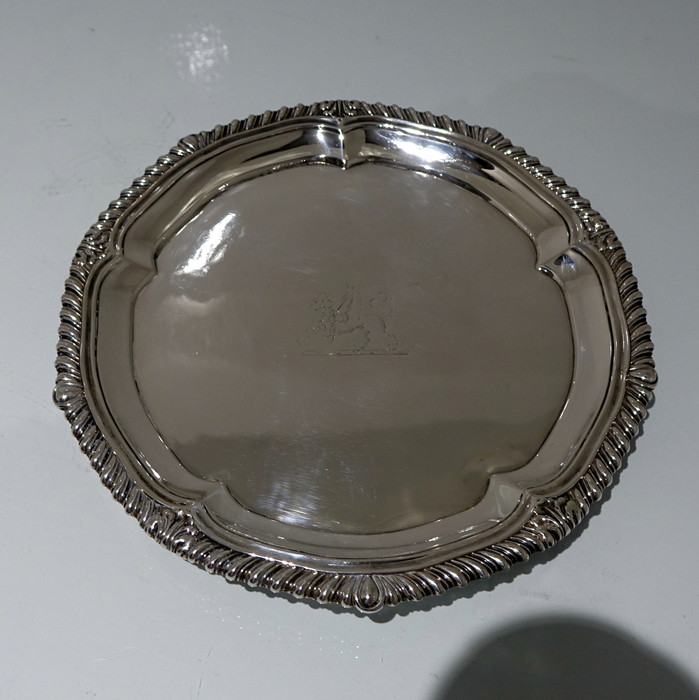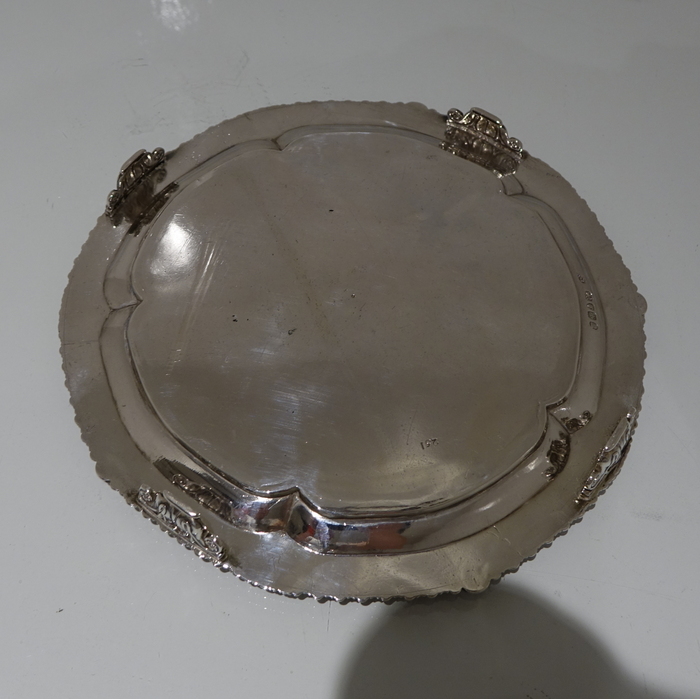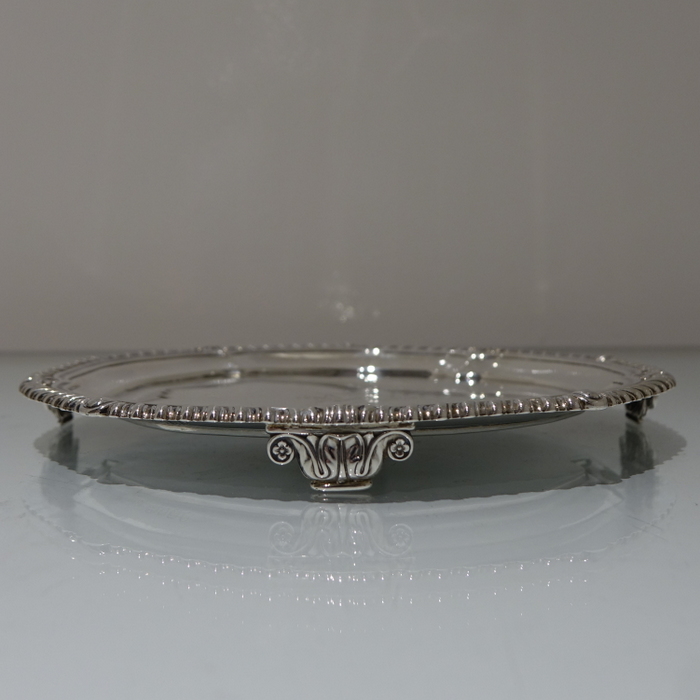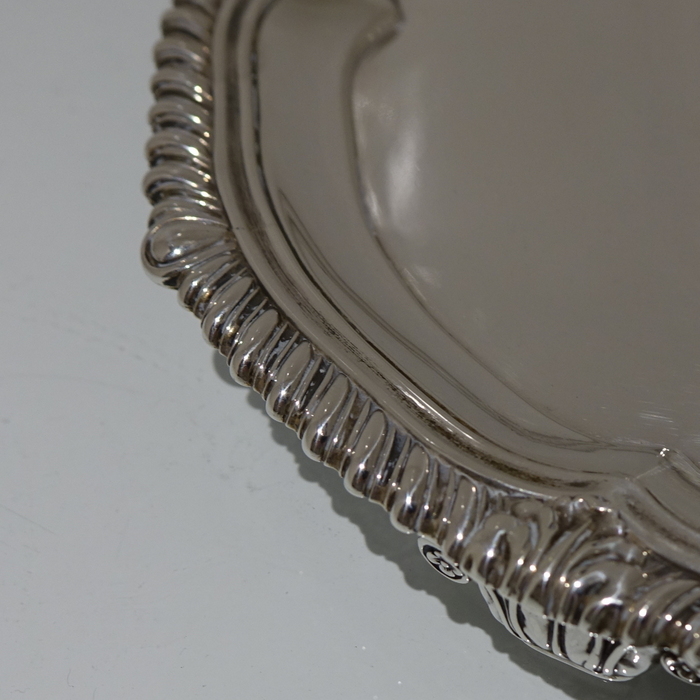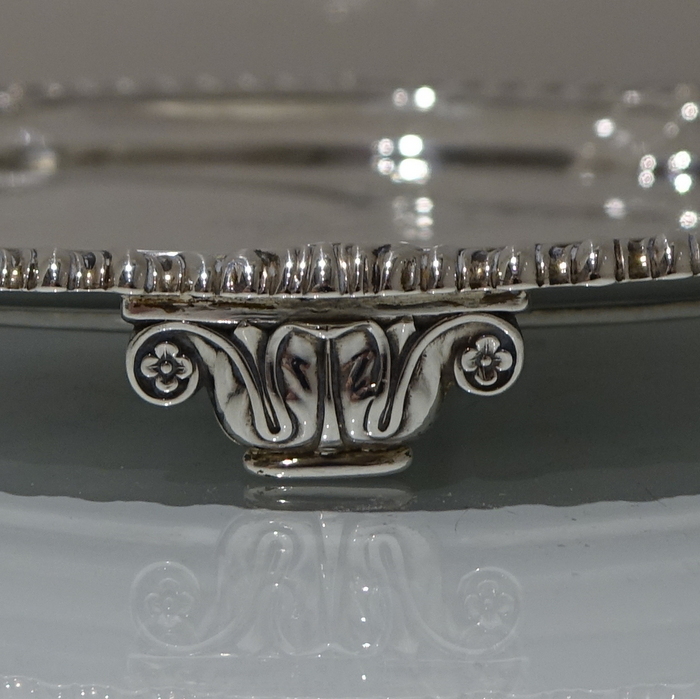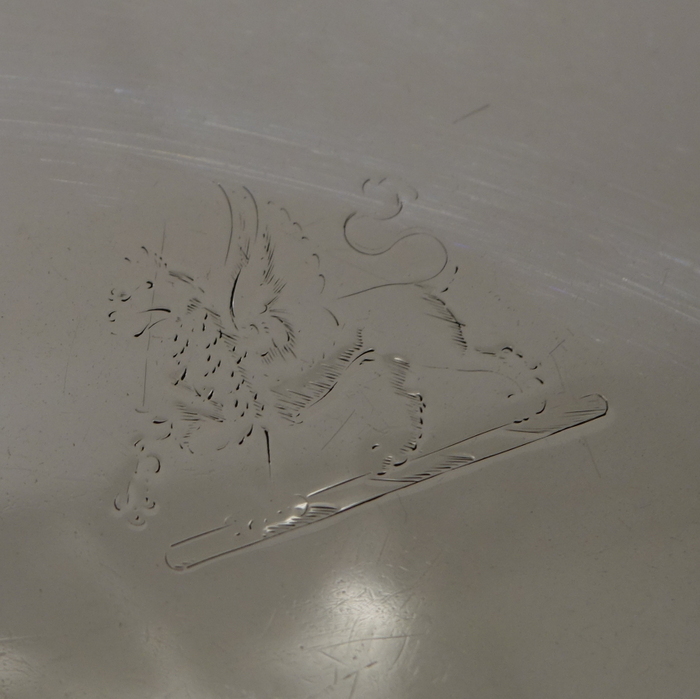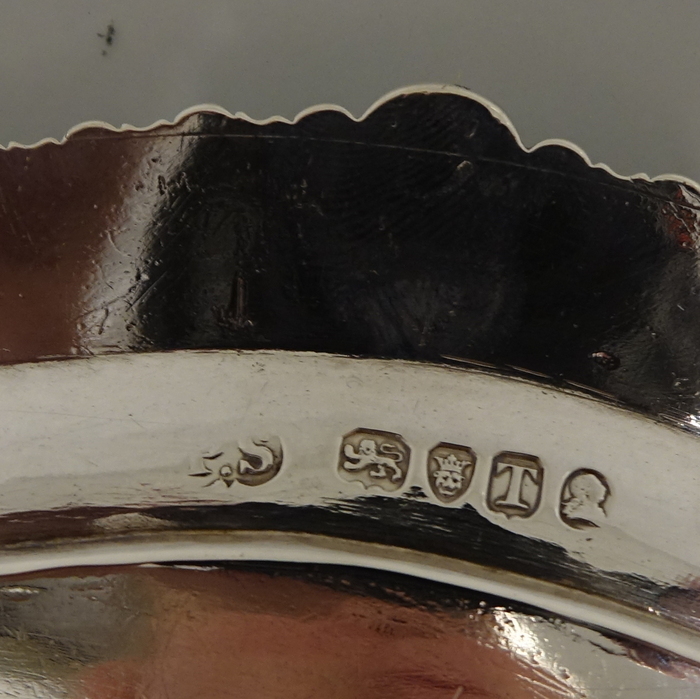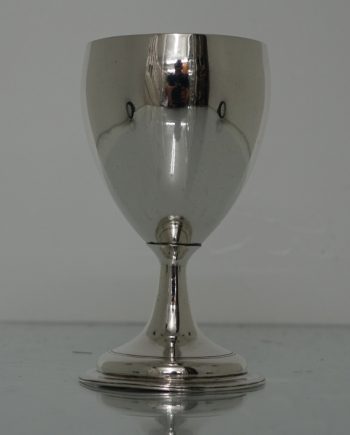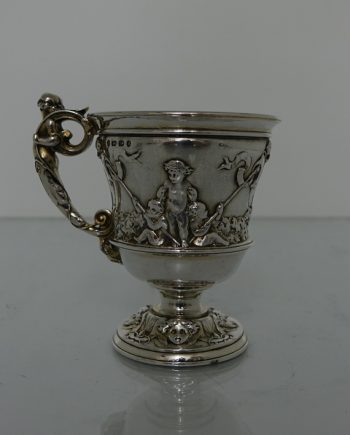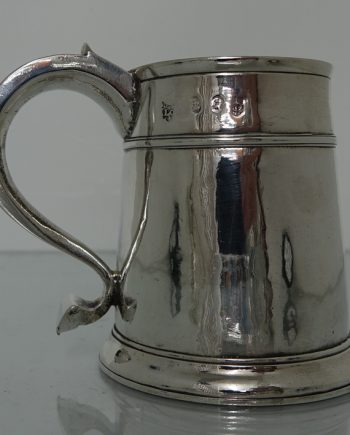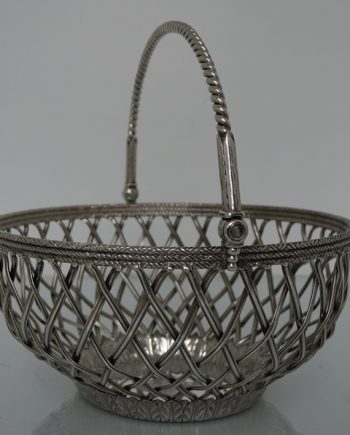Description
A very rare and highly collectable circular salver with an outer applied gadroon border for decoration. The centre front has a stylish contemporary crest and the salver sits on three ornate feet.
Weight: 14.4 troy ounces/448 grams
Diameter: 8.5 inches/21.75cm
Condition: Very good throughout. Slight time aged wear to crest.
Price: £3250
Paul Storr (1771 – 1844) was apprenticed to Andrew Fogelberg, a Swedish silversmith active as “plateworker” at 30 Church Street, Soho, obtaining his freedom in in 1792. In the same year Storr entered in partnership with William Frisbee registering their joint mark “WF over PS” (the address was 5 Cock Lane, Snowhill). The partnership was of short endurance and Storr entered his own mark “PS” on 12th January 1793 (the address was 30 Church Street, Soho). The “PS” mark, with few modifications, was maintained by Storr until his retirement in 1838. In 1796 Storr installed his business in 20 Aire (Air) Street, St. James’, Piccadilly, where he remained eleven years. It was here that Storr made a name for himself as one of London’s leading manufacturing silversmiths. Here Storr received orders from the great noble houses of England for cups, vases, kettles, wine coolers, dishes and plates. Whether such orders were commissioned through Philip Rundell is not proved, but it is certain that at this time he was very anxious to get Storr to work for him exclusively. Rundell persuaded Storr to leave Air Street and move to larger premises at 53 Dean Street. Soho. But before he agreed to move Storr made clear that by so doing he had no intention of losing his identity. He would call the new business “Storr & Co”, continue his own work at the new address and execute any orders which Rundell might give him. Matters were satisfactorily settled and the move was made in 1807. In reality 53 Dean Street was Rundell’s own manufactory and the firm “Storr & Co” had simply been put in to manage it. Anyway Storr had been made a partner (possibly in 1811) with Philip Rundell, John Bridge, Edmund Waller Rundell and William Theed. Obviously Storr was engaged not so much in his own firm’s work, but chiefly in executing the orders that poured into Rundell’s shop in Ludgate Hill. Silver production continued to bear Storr’s “PS” mark but most important pieces received the additional Latin inscription “RUNDELL BRIDGE ET RUNDELL AURIFICES REGIS LONDINI FECERUNT” (MADE BY RUNDELL BRIDGE AND RUNDELL LONDON’S KING GOLDSMITHS). Soon was clear that as time went on and trade increased past all expectations there was little chance of anything being produced by Storr & Co. Storr found himself becoming merely the head of a mass-production workshop and felt his individuality and personal craftsmanship rapidly disappearing. At a great extent Paul’s work was reduced to that of a supervisor. To recapture his own individuality in 1819 he decided to leave the firm, resign his partnership with Rundell Bridge & Rundell and once more work on his own, moving to other premises at 18 Harrison Street, Gray’s Inn Lane (later Road). After severing the connection with Rundell, the next step was to research a “shop-window” in the West End. The new retail place was found at 13 New Bond Street and, in 1822, John Mortimer entered in partnership with Storr as responsible of the retail business forming the firm “Storr and Mortimer, Gold and Silver Smiths”. All went well until 1826, when it appears that Mortimer had brought the retail business to the verge of ruin by overbuying stock, and neither he nor Storr had any further capital to put in to save the situation. The crisis was averted by John Samuel Hunt (son of Richard Hunt and Catherine Beyer, Storr’s sister-in-law) who entered in the partnership bringing £ 5,000 as capital. The business was successfully continued by the three partners from 1826 to 1838 when Storr decided to retire. Meanwhile the business prospered and the trade was transferred to 156 New Bond Street. Before his retirement John, son of John Samuel Hunt, was admitted in the business as junior partner and the firm was styled Mortimer & Hunt.In 1839 they entered a new mark “IM over ISH crowned”. A branch was established in New York at 30 Warren Street (1839) and 356 Broadway (1841). The branch was closed at the end of 1841. In 1842, at the retirement of John Mortimer, Robert Roskell entered in the partnership, the firm was styled “Hunt and Roskell” and the mark changed to “ISH crowned”. At the death of John Samuel Hunt (1865) the mark was altered to “IH over RR crowned” (John Hunt and Robert Roskell). This mark remained unaltered until 1882 (John Hunt had died in 1879). The firm was now managed by John Mortimer Hunt (son of John Hunt) and Allen Roskell (son of Robert Roskell). They revived the old name of the firm Hunt & Roskell, often adding the inscription “Late Storr & Mortimer” The mark was now “RR over AR over IMH crowned” .In 1889 the firm (no Hunt and Roskell were in the business) was bought by J.W Benson and from 1889 to 1895 the mark was “AB (Alfred Benson) over HHW (H.H. Wintle) crowned”. In 1895-1907 the mark was “AM ( over AHB (Arthur Henry Benson) crowned. In 1897, with the creation of a company, the mark was altered to “H&R Ltd”. The crown in the mark was abandoned in 1901.



